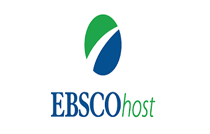Mansoura Veterinary Medical Journal
Document Type
Review Article
Keywords
External coating, Leaks, Risk factors, Anastomotic healing
Abstract
Intestinal healing normally proceeds through three stages: the inflammatory, proliferative, and maturation stages. Dehiscence, a disastrous outcome of intestinal anastomosis surgery, usually happens during the inflammatory stage of recovery, when the anastomotic technique (suture or staple line) has the greatest influence on the biomechanical strength of the anastomosis. Because of the severe systemic abnormalities and financial load brought on by septic peritonitis and the need for a second surgery, the ensuing septic peritonitis is linked to an astounding morbidity rate of up to 85%.
Despite the relatively high frequency of anastomosis surgeries, anastomotic leaks pose a deadly risk to colon anastomosis surgery due to increased morbidity and mortality. Several therapies have been developed to reduce the possibility of colon anastomotic leaks and to facilitate the healing of anastomotic wounds. Many treatments have been described to address these unfortunate circumstances and speed up the healing process because anastomotic leakages might have potentially lethal effects. We have produced a combined evaluation that includes some of the most excellent and recent methods for using various materials for colonic anastomotic leaking and the healing process in order to better understand the procedures taken to treat this issue. This article aims to provide a general overview of colonic anastomotic leakage, as well as new approaches to prevent and manage the problem. It also aims to improve anastomotic healing for a broader readership, with a focus on biomedical engineers.
How to Cite This Article
Albahrawy, Mohammed; Abass, Marwa; Mosbah, Esam; Karrouf, Gamal; and Zaghloul, Adel
(2024)
"A narrative review on pathophysiology and the trends in preventing colon anastomotic leakage in animals,"
Mansoura Veterinary Medical Journal: Vol. 25:
Iss.
2, Article 3.
DOI: https://doi.org/10.35943/2682-2512.1235
Receive Date
Feb 06, 2024
Accept Date
Apr 23, 2024
Publication Date
2024






